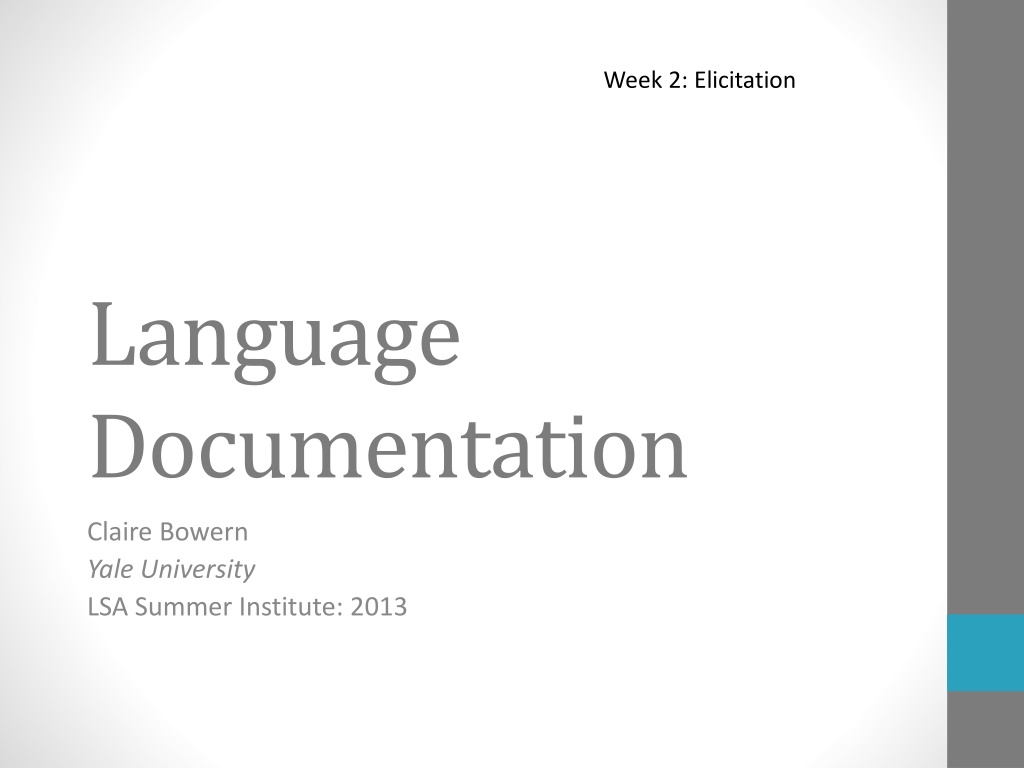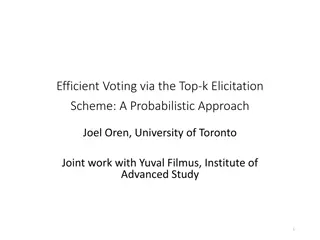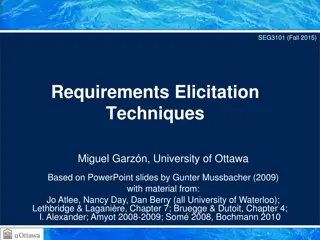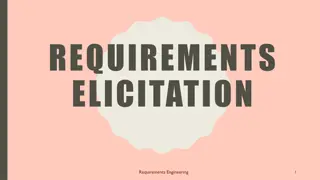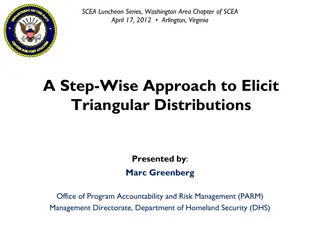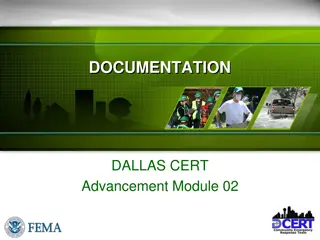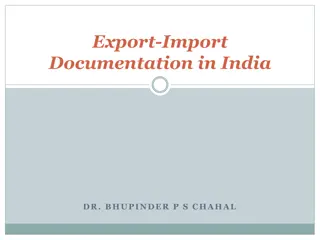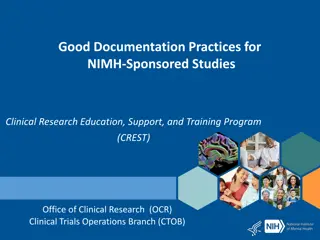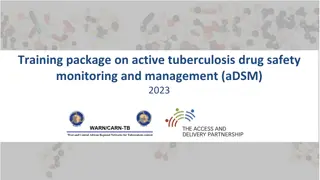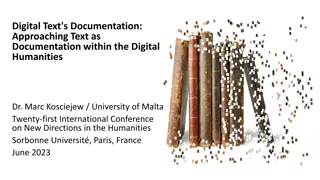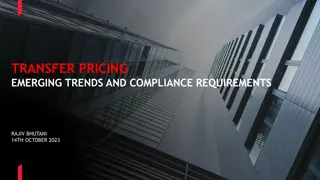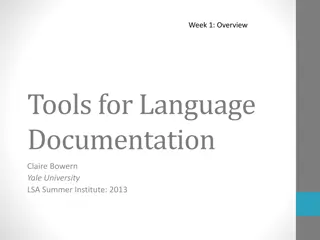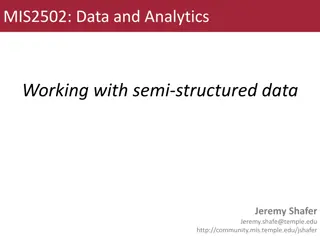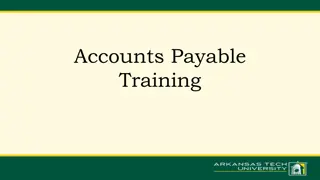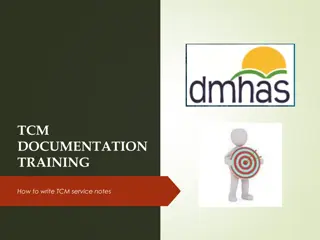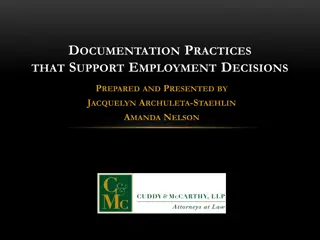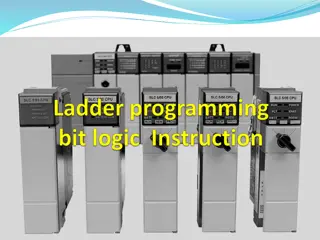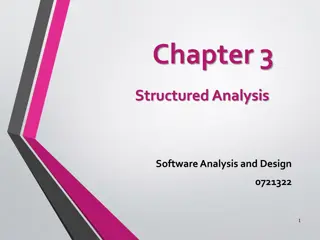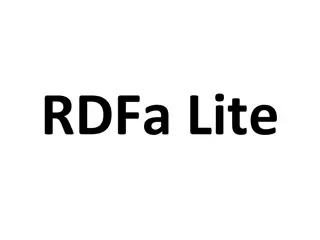Structured Elicitation Methods for Language Documentation
Explore various types of elicitation methods such as structured translation, grammaticality judgments, and picture identification tasks for language documentation. Learn how to design tests, conduct sessions, and analyze language outcomes effectively. Understand the importance of using appropriate vocabularies and small sets for testing linguistic features.
- Elicitation methods
- Language documentation
- Structured elicitation
- Linguistic testing
- Language assessment
Download Presentation

Please find below an Image/Link to download the presentation.
The content on the website is provided AS IS for your information and personal use only. It may not be sold, licensed, or shared on other websites without obtaining consent from the author. Download presentation by click this link. If you encounter any issues during the download, it is possible that the publisher has removed the file from their server.
E N D
Presentation Transcript
Week 2: Elicitation Language Documentation Claire Bowern Yale University LSA Summer Institute: 2013
1) 2) 3) Types of Elicitation Suggestions for structuring sessions Suggestions for structuring a field trip ELICITATION
Types of elicitation Structured Translation Grammaticality judgments, sentence checking Picture identification tasks (e.g. flora/fauna identification, color chip naming) > direct relationship between the task prompt and the language outcome Semi-structured Vernacular definitions Language games (e.g. card games, map tasks) Visual prompt tasks (videos, frog stories, etc) > task prompt guides the language outcome but speakers have more freedom in their responses. Unstructured Narratives Conversation
Types of structured elicitation Translation lexical elicitation surveys
Class example: How would you design a test to see whether the language is ergative? What sort of questions would you ask? (Use me as the consultant for Bardi to work out the Bardi case alignment.)
Making up good sentences Work out what you want to test. Don t try to test too much at once. Do several sessions on the same material (e.g. one exploratory, several follow-ups) Don t use weird vocab (it s a distraction) Pros and cons of using the same small vocab set. priming discourse factors less distracting may increase translation errors?
Grammaticality judgments Ways of testing what are possible constructions in the language. Ways of checking your hypotheses for how the grammar works (e.g. can your theory distinguish real sentences from impossible ones)? Bound up in theoretical issues about the object of study (what people do say, or what they can say?)
Ways of asking Can you say Can I say Is this a good sentence? Is it ok if I say Does it sound right if I say If someone said what would you think? I made up this sentence but I don t know if it s something a real speaker would say I think Bessie said this but I don t know if I wrote it down right.
Other experimental tasks fill in the blanks arrange the words in a sentence put the word in a sentence minimal permutations of a sentence
Advantages Targeted to particular constructions; lets you fill in holes in the documentation quickly Vital for types of data collection that need standard responses (e.g. intonation research) Allows the linguist to plan; reduces the unknowns (e.g. can use familiar vocabulary)
Disadvantages Priming Might not get natural translations Might not get accurate translations Some types of structures are hard to get with translation equivalents (e.g. getting passive examples if the elicitation language doesn t have passives) Can be boring for consultant
Things to watch out for Don t have too many (or too few) examples. People new to elicitation planning tend to vary too much or too little across the sentences. Varying too little restricts the utility of the data. Varying too much makes it hard to generalize Priming! Leading questions! Nonsense data (confusing your consultant) Rushing your consultant (not giving them time to answer) Boring your consultant Some judgments are fragile
Training the consultant? Keeping the consultant in the dark about the purpose of the session versus clueing them in and getting their insights Need to distinguish between the language data/judgments and the consultant s analysis. Some people are better at this than others.
Examples: MPI field manuals: http://fieldmanuals.mpi.nl/ EUROTYP questionnaires: http://www.eva.mpg.de/lingua/tools-at- lingboard/questionnaire/eurotyp_description.php
By hand or on computer? By hand: slower to write than type [unless using IPA] probably means retyping notes later might be hard for consultants to read your writing interlinearizing, callouts, etc, are faster harder to accidentally delete something. On the computer: keyboard noise? screen as barrier? Easier to back up Try both
Information to include: Date Consultant s name Number the pages Language name Your name
Fieldnote exercise examine the following scans of notes.
Some questions to think about Do you know what language the notes are about? Can you easily work out when these notes were written, who the consultant is, and what the notes are about? Can you tell whose notes they are? Can you read the handwriting? Can you tell which words line up with which glosses? Can you interpret any non-standard symbols? If pages fell out of the notebook, would you be able to put them back in the right place in the right order? Can you easily tell if there is associated media (e.g. a related tape)?
Questions: cont. When you cross something out, can you still read the rest of the word? When you write over a letter/word, can you tell which is the right representation and which is the wrong one? When you have two alternative transcriptions, can you tell which is right, or if they are both legitimate variants? Can you tell what is a deduction on your part and what was a metacomment made by your consultant? Can you tell what you need to check and what you know is right? Do all the diacritics you ve used show up if the notes are copied or scanned? Will you be able to find crucial examples again? Will you be able to read what you wrote if you come back to it in a year (e.g. will you be able to tell whether you wrote a vs o)?
